Bibliography
Books
Evgeny Bareev, Ilya Levitov: From London to Elista, New In Chess 2007
Anish Giri: After Magnus, New In Chess 2015
Ludek Pachman: Modern Chess Strategy, Ishi Press 2013
Vasil Panov: Escaques series
Renier Vazquez, Alfonso Romero, Dragan Barlov, Luis Bernal: El Secreto de Magnus Carlsen, Editorial Chessy 2016
Periodicals
ChessBase Magazine
Informant
Jaque Teora
New In Chess magazine
New In Chess Yearbooks
ChessBase MegaBase
Chess.com
CHAPTER 1
Fourth move alternatives
1.e4 e5 2.f3 c6 3.b5 f6
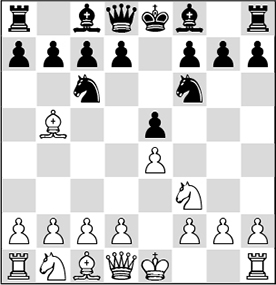
4.0-0 and 4.d3 are played most often and offer the greatest hope of obtaining an advantage, but also worthy of mention are three other alternatives: 4.d4 (variation A), 4.e2 (variation B) and 4.c3, which leads to the Four Knights Game, in which 4d4, the symmetrical 4b4 or even the somewhat eccentric 4d6 offer Black at least as many opportunities to equalise as in the variations of the Berlin proper. Among the world elite, Ivanchuk is the only one who uses this transposition.
1.e4 e5 2.f3 c6 3.b5 f6
A) 4.d4
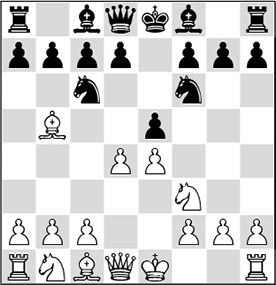
Advancing the d-pawn two squares is usually not a great idea in the Spanish when Black has not yet played d7-d6, and the Berlin is no exception to this principle.
4exd4
The most comfortable. Also possible is 4xe4, which leaves White with nothing better than 5.0-0, returning to the main roads leading to the Berlin. 5.d5!? allows Black to equalise with accurate play: 5d6 6.c3 xb5! 7.xb5 a6 8.c3 e7 9.xe5 d6 10.f3 g4 11.h3 xf3 12.xf3 g6= (Corrales-Lanzani, Seville 2011)
5.0-0
The late Vugar Gashimov occasionally tried the 5.e5 advance, although without too much success in the opening. His blindfold game against Ponomariov in the 2011 Beijing SportAccord continued 5e4 6.0-0 e7 7.xd4 0-0 8.xc6 (8.f5 d5 9.xe7+ xe7 10.f3 c5 11.e1 c6 12.f1 g6 13.e3 e6 14.f2 e8 15.c3 g5= Gashimov-Eljanov, Elista 2008) 8dxc6 9.e1 c5 10.c3.
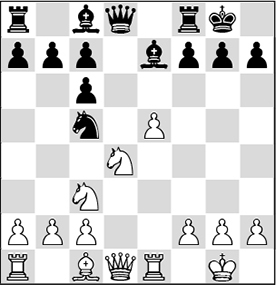
analysis diagram
10f5! is a resource mentioned by Ludek Pachman in his Modern Chess Strategy (Ishi Press, 2013), a book that is far better than its reputation: 11.exf6 (without this exchange, the blockade of the pawn would give Black a good game: 11.ce2 e6 12.xe6 xd1 13.xd1 xe6 14.f4 f7 (14c8!?) 15.xe6 xe6, and Black cannot lose) 11xf6 12.e3 e6 13.ce2 b6 14.xc6 xd1 15.axd1 xb2 16.ed4 xd4 17.xd4 e8=
5a6! 6.xc6
An idea that Carlsen has tried in blitz games.
6.a4 e7 7.e5 e4 8.xd4 xd4 9.xd4 c5 10.c3 0-0 11.d5 d6 12.xe7+ xe7 13.exd6 xd6 14.xd6 cxd6 15.b3 xb3 16.axb3 e6 led to a drawn endgame in V.Kovalev-Mikhalevski, Minsk rapid 2015.
6dxc6 7.xd4 c5!
The classic structure of the Spanish Exchange Variation has been reached, but with the advantage to Black of still having the queens on the board.
8.c3 0-0 9.f3
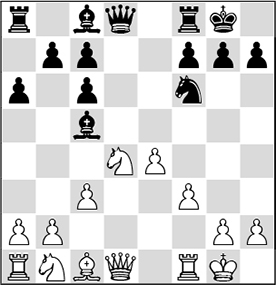
9e7!?
A possible improvement over Carlsen-Karjakin, Astana blitz 2012, where 9d7 10.e3 e5 11.e2 e7 12.d2 f6 13.h1 d6 14.ae1 c5 15.f5 xf5 16.exf5 was played, and White went on to organise the advance of the kingside pawns, with some chances of obtaining an advantage.
10.e3 d6
And with ideas of d5-f4 or c6-c5 followed by d8, Black is taking the initiative.
B) 4.e2
The favourite move of Dutch GM Tiviakov, a specialist in lines of the Closed Spanish with the queen on e2.
4c5
Playing in the spirit of the 4.d3 c5 variation, which we analyse in Chapters 3-7.
4a6 is the main alternative, and a perfectly sound move that transposes to the Morphy Defence (3a6) with the position of the white queen already defined, and which gives Black excellent prospects for equality. Unfortunately, Berlin devotees seldom learn the traditional lines with 3a6 and, as a result, may feel uncomfortable in this type of positions. We are following the game Anand-Carlsen, Monaco rapid 2011. 5.a4

5e7 Carlsen had played 5d6 against Tiviakov in Wijk aan Zee 2010, a game that began with the move order 3a6 4.a4 f6 4.e2. The development of the bishop, extravagant at first sight, prepares a later e8 and f8, leaving open the possibility of advancing the d-pawn two squares. The game continued 6.c3 0-0 7.d3 e8 8.g5!? (exploiting as much as possible the position of the bishop) 8b5 9.b3 a5 10.c2 c5 11.bd2 c6 12.f1 e7 13.e3 d6 14.0-0 e6 15.xf6 xf6 16.b3 and the control of the light squares gave White a small edge.
Another option is to play 5b5 immediately, and after 6.b3, choose between e7 or c5, reaching variations of the Closed Morphy or the Arkhangelsk with the queen already committed on e2.
6.c3 d6 7.0-0 0-0 8.d4 d7 Also possible now is 8b5, although the bishop has the extra possibility of reaching c2 in a single move. We will see this subtlety again in the next chapter. 9.d5 b8 10.xd7 bxd7 11.c4
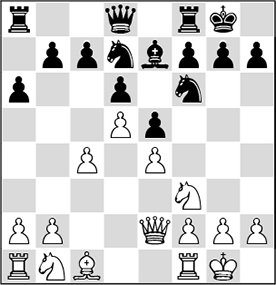
analysis diagram
A typical situation in the Steinitz Defence Deferred (3a6 4.a4 d6) has been reached. White is a little better, since a possible enemy attack on the kingside is not so strong without the light-squared bishop.
5.c3
The kings pawn is not too appetising: 5.xc6 bxc6! 6.xe5 0-0, and after d7-d5, the extra pawn cannot be maintained.
50-0 6.d3
In Harikrishna-Bacrot, Germany Bundesliga 2014/15, 6.0-0 d6 7.d1 was played, a typical idea with the queen on e2. Black foiled the two-square advance of the white d-pawn with 7b6 8.h3 (the pressure on the centre is too strong after 8.d4?! exd4 9.cxd4 g4 and e8 if fitting) 8e8 9.d3 (the recognition of a small failure) 9d7 10.bd2 e7 (10a6, and only then starting the knight manoeuvre, might be more accurate) 11.xd7 xd7 12.c4 g6 13.g5 e6 14.a4 c6 15.xb6 axb6 and Black has no major problems.

6h6!?
Pretty much a novelty, played in Hou Yifan-Kramnik, Dortmund 2015. The former World Champion prevents the pin, which could be annoying after otherwise playable alternatives such as 6e8 or 6d6. It may be more surprising that the direct 6d5!? is playable, another idea which we will see later on. After 7.bd2 or 7.g5 (the pawn cannot be taken: 7.xc6 bxc6 8.xe5? a6 ) the game will transpose into a good version of Chapter 6, line A.
) the game will transpose into a good version of Chapter 6, line A.
7.bd2
The pawn is still not appetising, but White has two acceptable alternatives at his disposal:
a) Normal is 7.0-0 d6 8.h3
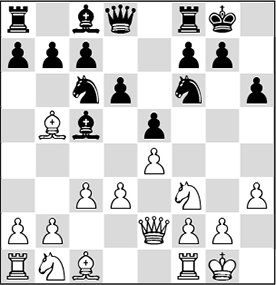
Next page
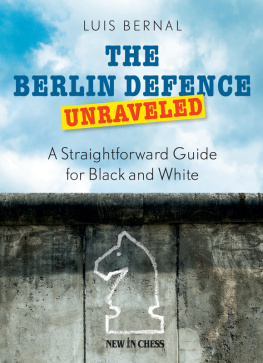

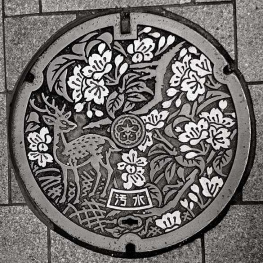



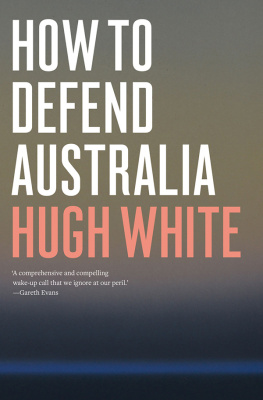
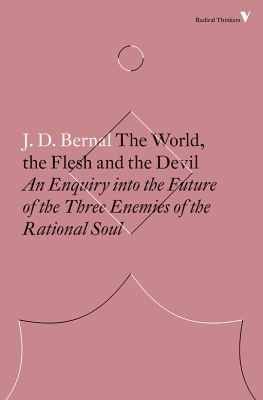









 ) the game will transpose into a good version of Chapter 6, line A.
) the game will transpose into a good version of Chapter 6, line A.